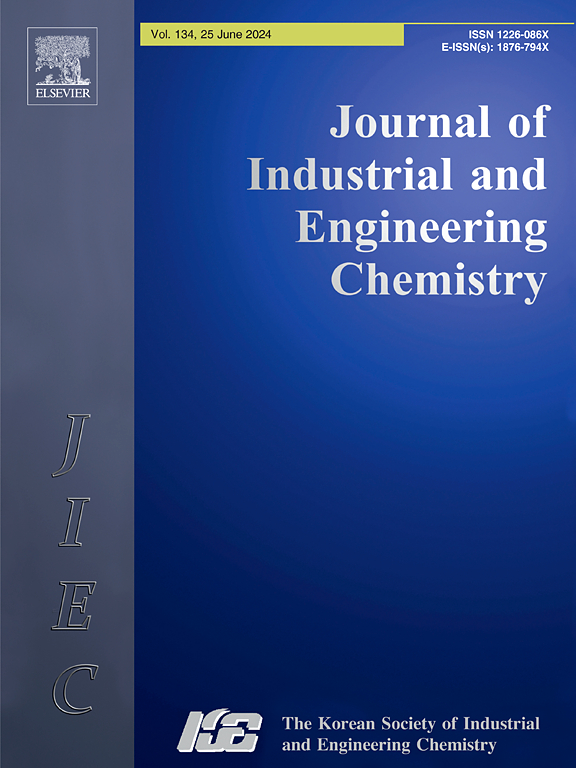Effects of polyol types of polyurethane-carbonate on electrochemical properties of quasi-solid polymer electrolyte for zinc ion battery
IF 5.9
3区 工程技术
Q1 CHEMISTRY, MULTIDISCIPLINARY
Journal of Industrial and Engineering Chemistry
Pub Date : 2025-01-25
DOI:10.1016/j.jiec.2024.07.015
引用次数: 0
Abstract
Zinc-ion batteries (ZIBs) are promising energy storage devices that provide effective performance in engineering applications. However, typical ZIBs contain aqueous electrolytes, which significantly cause the depletion of their zinc anode. To address this issue, quasi-solid polymer electrolytes (QSPEs) have been developed to reduce the liquid contained in battery cells. In this study, QSPEs were prepared via an electrospinning technique using polyurethane-carbonate/polyacrylonitrile (PUC/PAN). Different types of polyols in PUC structures were used to prepare the QSPE membranes. Consequently, PUC/PAN-based QSPE membranes exhibited the highest ionic conductivity of 5.12 × 10−3 S cm−1 with long-term charge–discharge cycles of 500 h. Using ammonium metavanadate as the cathode, the specific capacities of these membranes were up to 280 mAh g−1 at a current density of 0.2 A g−1. Moreover, the morphology and physical properties of the membranes were investigated to explain the influence of the polyol structures. Thus, the developed PUC/PAN membranes show potential as viable QSPEs to mitigate the performance and safety concerns associated with ZIBs.

聚氨酯-碳酸酯多元醇类型对锌离子电池准固体聚合物电解质电化学性能的影响
锌离子电池在工程应用中具有良好的性能,是一种很有前途的储能器件。然而,典型的ZIBs含有含水电解质,这明显导致锌阳极的损耗。为了解决这个问题,准固体聚合物电解质(qspe)已经被开发出来,以减少电池单元中所含的液体。本研究采用静电纺丝技术,以聚氨酯-碳酸酯/聚丙烯腈(PUC/PAN)为原料制备了qspe。用PUC结构中不同类型的多元醇制备了QSPE膜。结果表明,PUC/ pan基QSPE膜的离子电导率最高,为5.12 × 10−3 S cm−1,充放电周期为500 h。以偏氰酸铵为阴极,在0.2 a g−1电流密度下,该膜的比容量高达280 mAh g−1。此外,还研究了膜的形态和物理性质,以解释多元醇结构对膜的影响。因此,所开发的PUC/PAN膜显示出作为可行的qspe的潜力,以减轻与zib相关的性能和安全问题。
本文章由计算机程序翻译,如有差异,请以英文原文为准。
求助全文
约1分钟内获得全文
求助全文
来源期刊
CiteScore
10.40
自引率
6.60%
发文量
639
审稿时长
29 days
期刊介绍:
Journal of Industrial and Engineering Chemistry is published monthly in English by the Korean Society of Industrial and Engineering Chemistry. JIEC brings together multidisciplinary interests in one journal and is to disseminate information on all aspects of research and development in industrial and engineering chemistry. Contributions in the form of research articles, short communications, notes and reviews are considered for publication. The editors welcome original contributions that have not been and are not to be published elsewhere. Instruction to authors and a manuscript submissions form are printed at the end of each issue. Bulk reprints of individual articles can be ordered. This publication is partially supported by Korea Research Foundation and the Korean Federation of Science and Technology Societies.

 求助内容:
求助内容: 应助结果提醒方式:
应助结果提醒方式:


